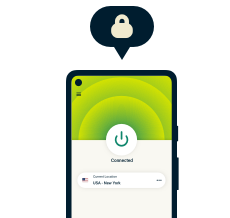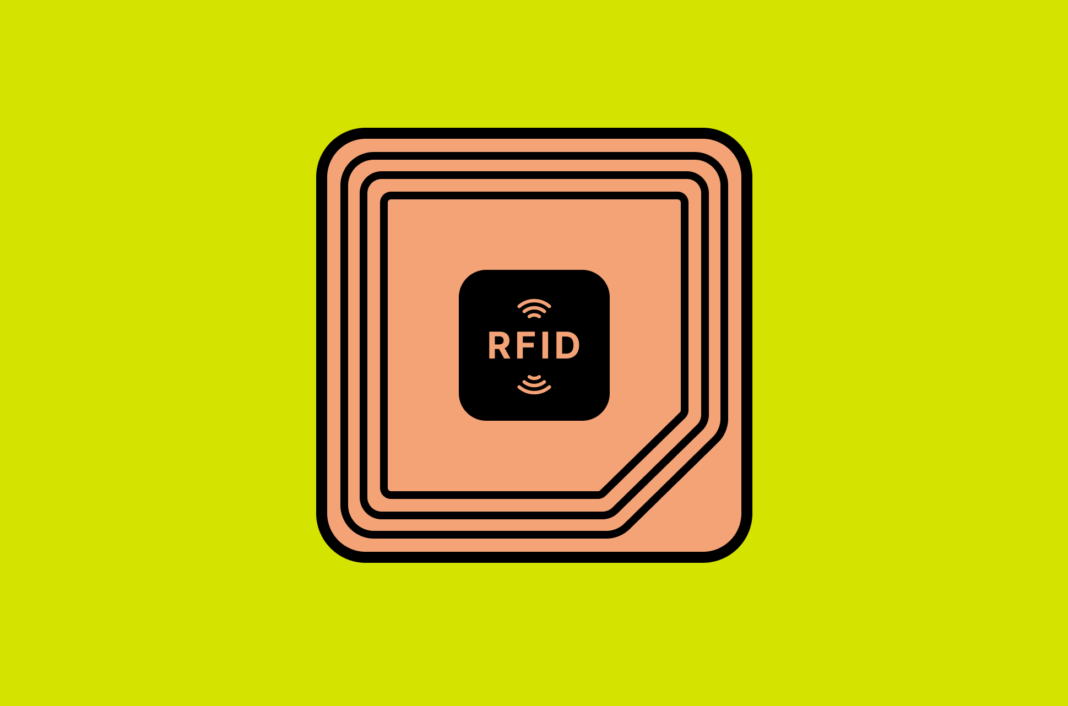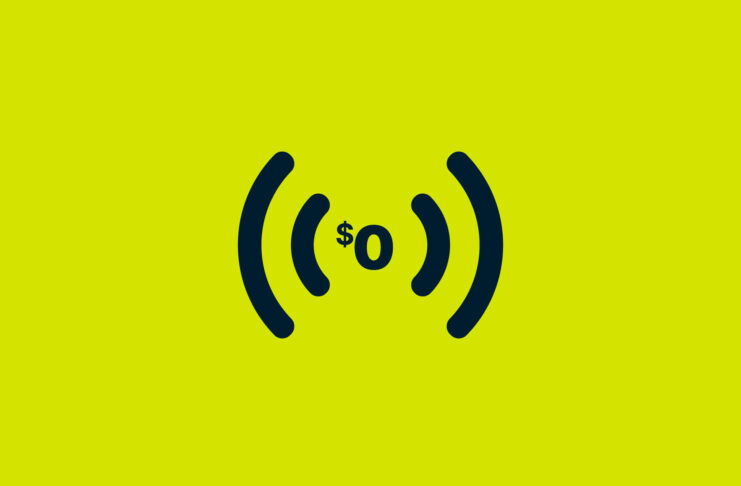RFID (radio-frequency identification) is a wireless technology that uses radio waves to identify and track objects. RFID tags are tiny electronic devices that can be attached to or embedded in objects. They contain a chip and antenna that store and transmit data. RFID readers can read the data on RFID tags from a short distance away. If an RFID tag is not adequately protected, it can be scanned by an RFID reader without your knowledge or consent. RFID blocking is the practice of preventing RFID signals from being read.
Jump to…
How is RFID used?
What is an RFID blocker?
Is RFID blocking really necessary?
Can RFID tags be used to track someone’s location?
Should I avoid using RFID?
How is RFID used?
You might be surprised at how prevalent RFID tags are in your day-to-day life. Here are some of the common uses for RFID:
Debit and credit cards
Most modern payment cards have an RFID tag to enable contactless payment.
Passports
All passports issued since 2007 are biometric passports (or ePassports). This means they contain an RFID tag with the same information as that on the colored page of your passport, as well as things like fingerprints, iris scans, or facial recognition, depending on the country issuing the passport.
Car key fobs
Most car manufacturers now use RFID technology to link the key fob to the car’s security system and the immobilizer, enabling keyless entry and ignition.
Inventory management
RFID tags are attached to everything from car parts and building supplies to fridges and televisions. Those trainers you bought recently? There’s probably a tiny RFID tag on the box.
Theft prevention
RFID tags can also be attached to items (such as a clothing tag) and used to trigger an alarm if someone tries to take an item out of the store without paying.
Retail experiences
It is RFID tags that enable Amazon’s contactless payment system, where customers can walk out of a physical store, their items getting deducted from their mobile payment systems automatically. In more traditional stores, RFID tags can speed up checkout processes (there’s no need to scan each item), and allow for customers to try on virtual clothing using magic mirror technology.
Employee badges
In addition to allowing employees to scan in and out of security, companies may also use RFID tags in employee badges to track office attendance.
Student cards
Many schools use RFID-tagged student ID cards to track attendance, boost security, and facilitate meal credits at school cafeterias.
What is an RFID blocker?
An RFID blocker is an object that prevents RFID signals from being read. RFID blockers can be in the form of wallets, cases, cards, or other items. They typically contain a metal mesh or other material that blocks radio waves.
How does an RFID blocker work?
RFID blockers work by creating an electromagnetic shield known as a Faraday cage (named after scientist Michael Faraday) around the RFID tag. A Faraday cage is a metal enclosure that blocks electromagnetic radiation. When an RFID tag is placed inside a Faraday cage, it cannot be read by an RFID reader or any other device.
What does RFID blocking do?
RFID blocking prevents RFID signals from being read. It does this by preventing the RFID tag from transmitting the information so the RFID reader has no signal to receive.
Examples of RFID-blocking tech
There are a variety of RFID-blocking products available, including:
- Wallets
- Sleeves for credit cards and passports
- Backpacks and purses
- Stickers
- Cards
It’s also possible to create a homemade Faraday cage or RFID blocker by wrapping your item in aluminum foil. But it’s not easy to get it right, requiring the foil layer to have no holes and an insulating layer. So best not to attempt a homemade RFID blocker.
Is RFID blocking really necessary?
People using an RFID-blocking product to protect their wallets are generally worried about a scam called “skimming,” where credit card information is stolen. RFID blocking is probably unnecessary to prevent this, for a couple of reasons.
- Contactless payment cards generally don’t transmit information containing your credit card details, your name, or any other private data.
- It’s a highly ineffective way for someone to attempt to collect that information—it’s far more efficient to run a phishing scam or to purchase lists of credit cards on the dark web.
If you’re worried about your passport information being stolen, this, too, seems to be unlikely. The U.S. Department of Homeland Security states that “All e-Passports issued by Visa Waiver Program (VWP) countries and the United States have security features to prevent the unauthorized reading or “skimming” of data stored on the e-Passport chip.” While passport technology varies from country to country, there are no credible reports of passport skimming.
However, there is one scenario where you may want to consider using an RFID-blocking product—car key fobs. Car thieves have been known to access vehicles using RFID via a technique called a relay attack (not to be confused with a replay attack).
Relay attacks: Imagine your car is parked in your driveway, and your keys are in your house—too far away to open or start your car. By placing a handheld radio device near the car, the signal from the car can be amplified, possibly enough to reach the key fob inside your house. To avoid this, some people store their key fobs in a metal box.
Can RFID tags be used to track someone’s location?
Yes, RFID tags can be used to track your location. In most cases, this is known to the person being tracked, such as an employee in a large warehouse. But someone (the government or a shopping mall, for instance) could in theory stalk you via such a tag without you knowing.
Should I avoid using RFID?
RFID in itself is not harmful, but there are ways of using it that may constitute a violation of privacy: For example, the use of RFID tagging on over 5,000 kids to track them without their knowledge or contact tracing in the workplace to monitor extended interactions between employees.
You may not have a choice when it comes to avoiding RFID-tagged cards and devices—it’s a technology that’s permeated our daily lives. However, you can take steps to reduce the likelihood of theft or privacy breaches.
- Check your bank statements regularly, looking out for unfamiliar transactions
- Be aware of RFID tags and remove them once they no longer serve a purpose (for example, removing them from clothing tags)
- If you use an RFID-tagged pass at work or school, find out what information is being collected and how it’s being used—and know your rights
FAQ: RFID blocking
Does RFID blocking work?
Yes, RFID blocking works when done correctly.
How big is an RFID tag?
RFID tags can vary in size from as small as a grain of pepper to the size of a brick. The smaller the tag, the smaller the antenna, meaning that the RFID reader will need to be in very close proximity to the tag to read it.
What does an RFID tag look like?
What an RFID tag looks like depends on how it’s being used—some are contained inside other devices (such as a key fob) and are therefore not easily seen. A visible RFID tag is likely to be small and flat enough to be embedded in a sticker. It will often look like a metallic design with nested squares, sometimes with a corner cut off.
Should I use an RFID-blocking wallet or bag?
There’s no harm in using one if you want to, but there’s no evidence it’s necessary. The only RFID-blocking tech you might want to consider is a metal box to keep your key fob in.

Protect your online privacy and security
30-day money-back guarantee






![[Quiz] How much is your data worth on the dark web? how much are you worth on the dark web (1)](https://s22908.pcdn.co/wp-content/uploads/2023/04/how-much-are-you-worth-on-the-dark-web-1-1-100x70.jpg)


















